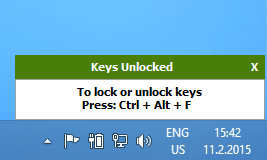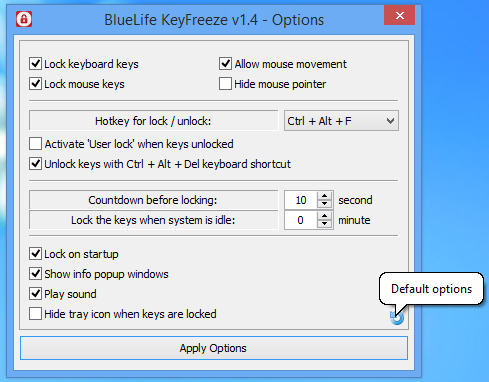1 mile
My in-laws’ two homes are each about 1 mile away from the flames of the Kincaid fire in Santa Rosa. Please send good wishes!
The coldest winter I ever spent
Archive for October 2019
My in-laws’ two homes are each about 1 mile away from the flames of the Kincaid fire in Santa Rosa. Please send good wishes!
TL;DNR: Keeping the humidity at 40-60% dramatically decreases airborne infection rates!
Here are snippets from an article in Forbes, shown to me by Winnie Chen.
Oct 17, 2019, 09:30am
This Inexpensive Action Lowers Hospital Infections And Protects Against Flu Season
Leah Binder
Healthcare
“Harvard Medical School graduate and lecturer, Stephanie Taylor” heads this research…
“The one factor most associated with infection was (drum roll): dry air.”
“Taylor finds one of the most interesting studies from a team at the Mayo Clinic, which humidified half of the classrooms in a preschool and left the other half alone over three months during the winter. Influenza-related absenteeism in the humidified classrooms was two-thirds lower than in the standard classrooms–a dramatic difference.”
“They used to assume the microbes in desiccated droplets were dead, but advances in the past several years changed that thinking.”
In looking up hand research for work, I came across this super-cool machine learning article. In brief: a computer can read an X-Ray and tell if a person is a boy or girl really accurately and (at least some) doctors can’t! Maybe by paying attention to what the computer sees, doctors can figure out how to determine the gender of the hand in the X-ray.
https://link.springer.com/article/10.1007/s10278-018-0148-x
Abstract
Despite the well-established impact of sex and sex hormones on bone structure and density, there has been limited description of sexual dimorphism in the hand and wrist in the literature. We developed a deep convolutional neural network (CNN) model to predict sex based on hand radiographs of children and adults aged between 5 and 70 years. Of the 1531 radiographs tested, the algorithm predicted sex correctly in 95.9% (κ = 0.92) of the cases. Two human radiologists achieved 58% (κ = 0.15) and 46% (κ = − 0.07) accuracy. The class activation maps (CAM) showed that the model mostly focused on the 2nd and 3rd metacarpal base or thumb sesamoid in women, and distal radioulnar joint, distal radial physis and epiphysis, or 3rd metacarpophalangeal joint in men. The radiologists reviewed 70 cases (35 females and 35 males) labeled with sex along with heat maps generated by CAM, but they could not find any patterns that distinguish the two sexes. A small sample of patients (n = 44) with sexual developmental disorders or transgender identity was selected for a preliminary exploration of application of the model. The model prediction agreed with phenotypic sex in only 77.8% (κ = 0.54) of these cases. To the best of our knowledge, this is the first study that demonstrated a machine learning model to perform a task in which human experts could not fulfill.
 Problem: At my school, I often want to keep my heavy, automatically-locking door open just a crack so I and the kids can get back in. Using a traditional wedge door-stop works but it often gets stepped on, kicked or misplaced. Now I use these pinch guards. When not in use, I use Velcro (AKA hook and loop fasteners) on the wall to keep them close-by. All-in, they cost less than $4 per door and they work very well!
Problem: At my school, I often want to keep my heavy, automatically-locking door open just a crack so I and the kids can get back in. Using a traditional wedge door-stop works but it often gets stepped on, kicked or misplaced. Now I use these pinch guards. When not in use, I use Velcro (AKA hook and loop fasteners) on the wall to keep them close-by. All-in, they cost less than $4 per door and they work very well!
Self Adhesive Hook and Loop Tape (Velcro)
Some tips and notes:
 Update 10-29-19: These pinch guards are standing up to normal use but not rough abuse from my students in my classrooms. A student doesn’t have to be strong to tear it apart. I’ve come across a very sturdy rubber-plastic door pinch-guard but I don’t know where to buy more! Where can I buy more of these? They were apparently provided for all the classrooms when one of my schools was renovated in ~2007. See the photo to the right. This doorstop would be too heavy to hold in place with velcro so maybe the solution above is best.
Update 10-29-19: These pinch guards are standing up to normal use but not rough abuse from my students in my classrooms. A student doesn’t have to be strong to tear it apart. I’ve come across a very sturdy rubber-plastic door pinch-guard but I don’t know where to buy more! Where can I buy more of these? They were apparently provided for all the classrooms when one of my schools was renovated in ~2007. See the photo to the right. This doorstop would be too heavy to hold in place with velcro so maybe the solution above is best.
The problem: In some of the classrooms I work in, students sometimes interrupt computer presentations on the teacher’s computer by randomly hitting the the keyboard.
 The solution: A free Windows software utility. With it, the keyboard and mouse can be easily locked and unlocked with a special key combination, for example: Ctrl-Alt-F. This makes their computer immune to “fly-by” keyboard tapping. When the behavior doesn’t get the frustrated attention it used to, it is quickly extinguished.
The solution: A free Windows software utility. With it, the keyboard and mouse can be easily locked and unlocked with a special key combination, for example: Ctrl-Alt-F. This makes their computer immune to “fly-by” keyboard tapping. When the behavior doesn’t get the frustrated attention it used to, it is quickly extinguished.
You can find the software here: BlueLife KeyFreeze v1.4
Just in case, here is a local copy of the Bluelife KeyFreeze 1.4.

I tried several other keyboard & mouse lockers and this one was clearly the best. KeyFreeze is free software. It works great “out of the box” but you may want to change a few options from the icon on the system tray. I turned off the cute lock/unlock music and customized it a little.
Installing it takes a couple steps (I’m not complaining, it’s totally free software!), I’ll walk you through it.
1 – Download and unzip BlueLife KeyFreeze
2 – It doesn’t run an installation program, it just runs when you double-click on it. It’s not good practice to run the program from my “Downloads” folder so I copied all the files to a new folder named C:\Programs\Keyfreeze
3 – You should make it start automatically when Windows starts. Here’s how to do that: Go to the C:\Programs\Keyfreeze folder and create a shortcut to KeyFreeze_x64.exe by right-clicking on it. Hit Win+R. Type “shell:startup” to open up the Windows startup folder. Drag the shortcut you just made into that folder. Done!
Now, when you want to freeze the keyboard and mouse, just hit Ctrl-Alt-F. To unfreeze, do it again.
For difficult classroom situations, you might want to disable the touch-screen and the “turn computer off when closing the lid” features. Here’s how:
– On my computer, to disable the touch-screen I hit the Windows key, type “Device manager”, find “Human Interface Devices”, find the “HID Compliant touch screen”, click the “driver” tab, click “Disable Device”. You can re-enable the touch screen by coming back to this page and clicking “Enable Device”
– To disable the “Turn off the computer when closing the lid” feature, hit the Windows key, type “change what closing the lid does”, change “When I close the lid” to “Do nothing”.
I’d love to hear in the comments if this software was useful in your classroom!
I’ve become an enthusiastic yet strangely melancholic fan of the band This Will Destroy You, this post-ambient, syncopated, instrumental rock band. Their music makes me feel like I’m being gently smothered by a giant tabby cat while sleeping, only for me to leap up, gasping for the most delicious breath of my life. Oh yeah.
Let’s see them together on February 8th in Berkeley, CA at The Cornerstone!
Here’s one of their cat-breath-stealing hits https://www.youtube.com/watch?v=fbszJJr9I9U
As an occupational therapist, I attach all kinds of things with Velcro. It’s also known as hook and loop fasteners. I use Velcro for PECS cards, game cards, attaching stuff to my door, First-Then cards, and lots of other stuff. I asked myself, “What is the best way to mount Velcro?” Do the hooks/rough side go on the wall or the object?
Here’s the rule that I follow… the Velcro rule!
“Soft goes on the surface.”
Why?
By picking one standard, all your items become compatible with one another. So even if you don’t have an immediate need, everyone is better off sticking to the standard “Soft goes on the surface.”
(I have to thank The Practical AAC for advice on this and the image!)
Please help me find a good noisy-environment speech recognition microphone. I have students that want to use speech-to-text in their classroom, the microphone should pick up the student’s voice but not stray voices in the room. Best if it’s on a headset.